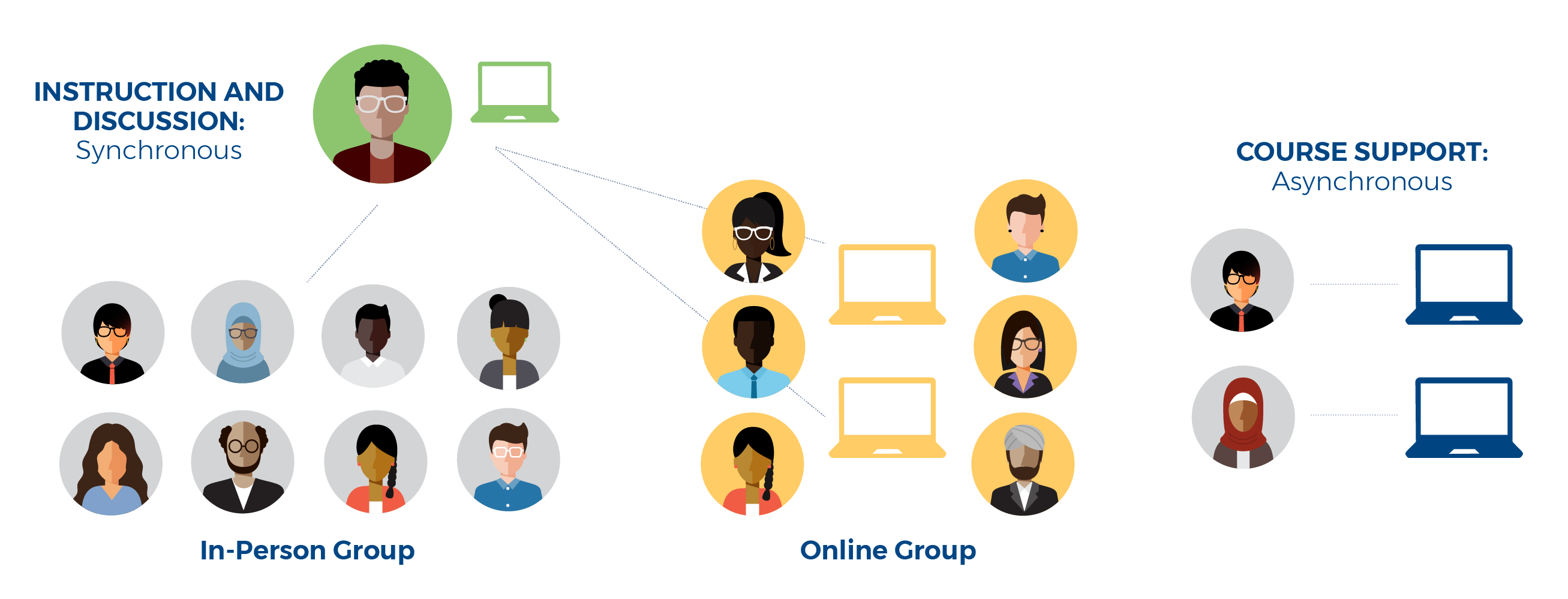Blended Teaching Strategies
A blended instructional model is one in which instruction is provided in both a face-to-face format and online simultaneously.
A blended classroom must be agile and highly attentive to individual student needs. It offers opportunities for learning that foster student agency through in-person settings that allow for social distancing and online opportunities that keep students safe.
Make sure you have the proper equipment to conduct this type of blended approach. If your classroom has a camera available, use Zoom or Blackboard Collaborate to connect in-person and online students. Be sure to record all class sessions.
Blended Teaching Strategies
Deliver and record instruction (synchronously) to in-person students or a combination of in-person and online students. Post the recording after class so students can access it at any time (asynchronously).
You can record lectures or PowerPoint presentations prior to the actual class session. Then use the in-person (or blended) session to review your PowerPoint or recorded lecture, enabling you to incorporate active learning opportunities such as small group breakouts, one-minute papers, and other lecture breakers into your presentation. This offers a way for you to enhance your lectures and expand on ideas and concepts in synchronously.
In all Blended classes, it’s important to practice active teaching. You can use technology to achieve an active learning environment. Arranging small groups in Zoom or Collaborate across both settings allows for active learning and helps to build community among in-person and online students. Polling tools such as Near Pod or Polling Everywhere can enhance engagement. Any tools or teaching activities that allow students to actively engage in their learning are recommended.
Suggested Online Course (via LinkedIn Learning): Teaching Techniques: Blended Learning Fundamentals



